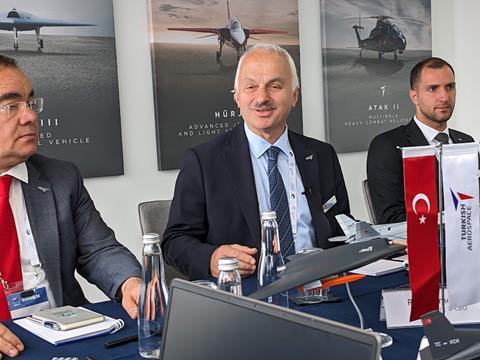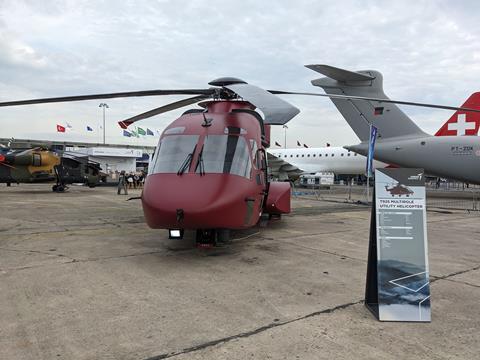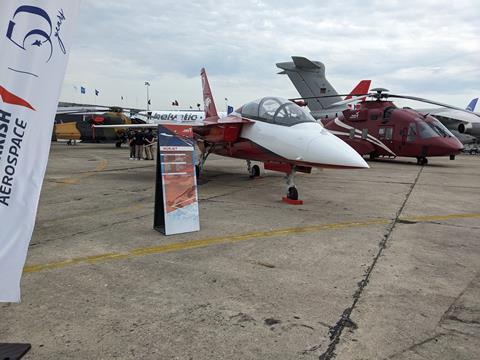Turkish Aerospace Industries (TAI) sees a big international market for its Hurjet advanced jet trainer, as the airframer presses ahead with ambitious developments of fixed-wing aircraft, helicopters and unmanned air vehicles (UAVs).
Speaking at the Paris air show, president and chief executive Temel Kotil believes there is a total market for 400 Hurjets over the next two decades: 100 for the Turkish air force and 300 for export customers.

Powered by a single GE Aerospace F404 engine, the Hurjet is still on the hunt for its first international order, following a maiden flight in April 2023. It lost out to the Korea Aerospace Industries FA-50 in a Malaysian requirement for 18 aircraft.
TAI also intends to deliver 20 Kaan fighters to the Turkish air force by 2028 in an initial Block 10 configuration, says Kotil. As the aircraft – which is due to make its first flight in late 2023 – matures, subsequent deliveries will be to the new Block 20 standard.
The Kaan is powered by a pair of F110 engines, but the company is “working on” an indigenous powerplant for the type.
TAI is showing several mock-ups in its static display, including a new 11t civilian helicopter designated the T925, which is based on a developmental military helicopter that Kotil refers to as the “general purpose two” helicopter; the company already produces the T625 Gokbey, a 6t utility helicopter.

A key driver behind the development of the 11t military helicopter is the Turkish navy, which requires the ability to transport up to 18 troops, as opposed to 12 carried by the T625. The new rotorcraft shares significant commonality with the in-development Atak II attack helicopter, including the transmission, engines, avionics, and other systems.
Meanwhile, the first flight of the Anka III unmanned air combat vehicle (UCAV) is planned in the next two weeks. The system uses a flying-wing configuration, and a model of the UCAV in the company’s chalet shows it carrying a range of precision munitions.
The UCAV is powered by a single turbofan engine, but TAI declines to specify the powerplant used.

Asked about the broad range of ambitious programmes that the company is undertaking simultaneously, Kotil says he has an experienced management team leading large numbers of young, ambitious engineers.
Longer term, he says the company aims to be among the top 10 defence contractors in the world. For now, Kotil says the company is ranked around “fifty plus”. Key to achieving this goal will be significant exports across the company’s full range of products.


























